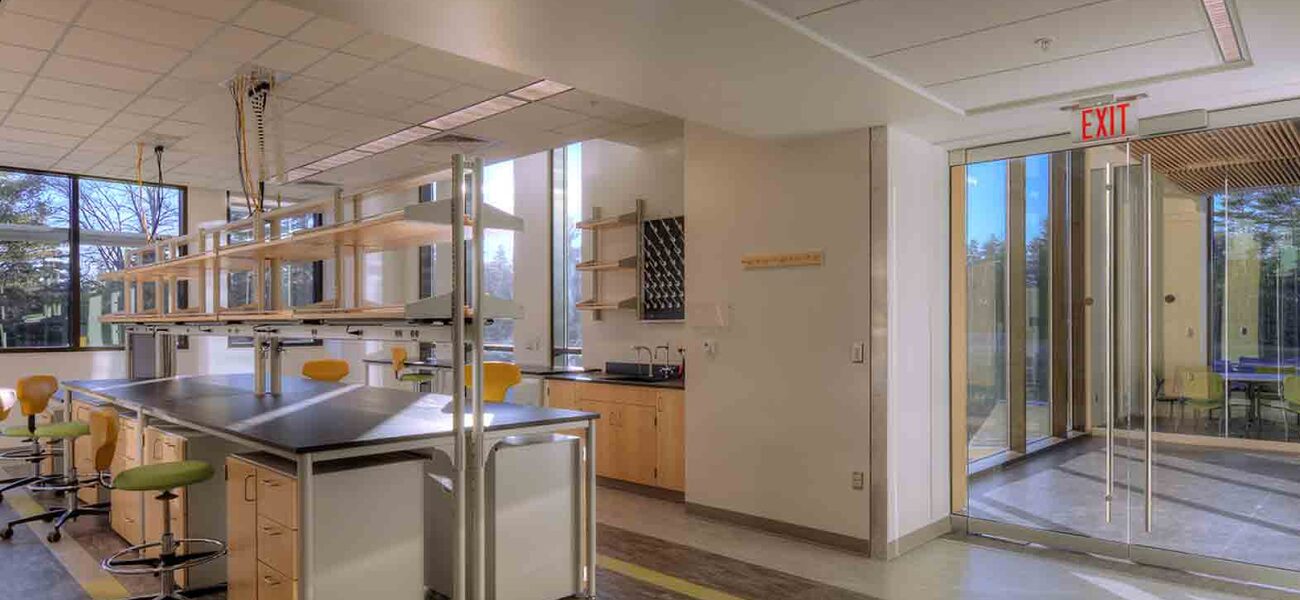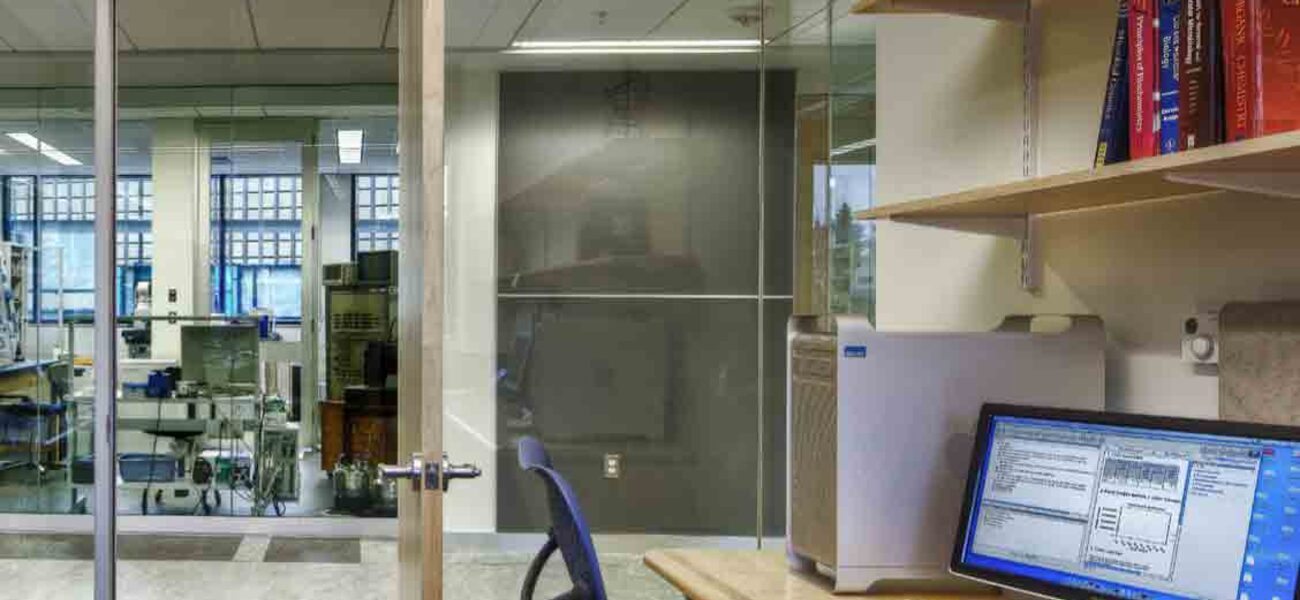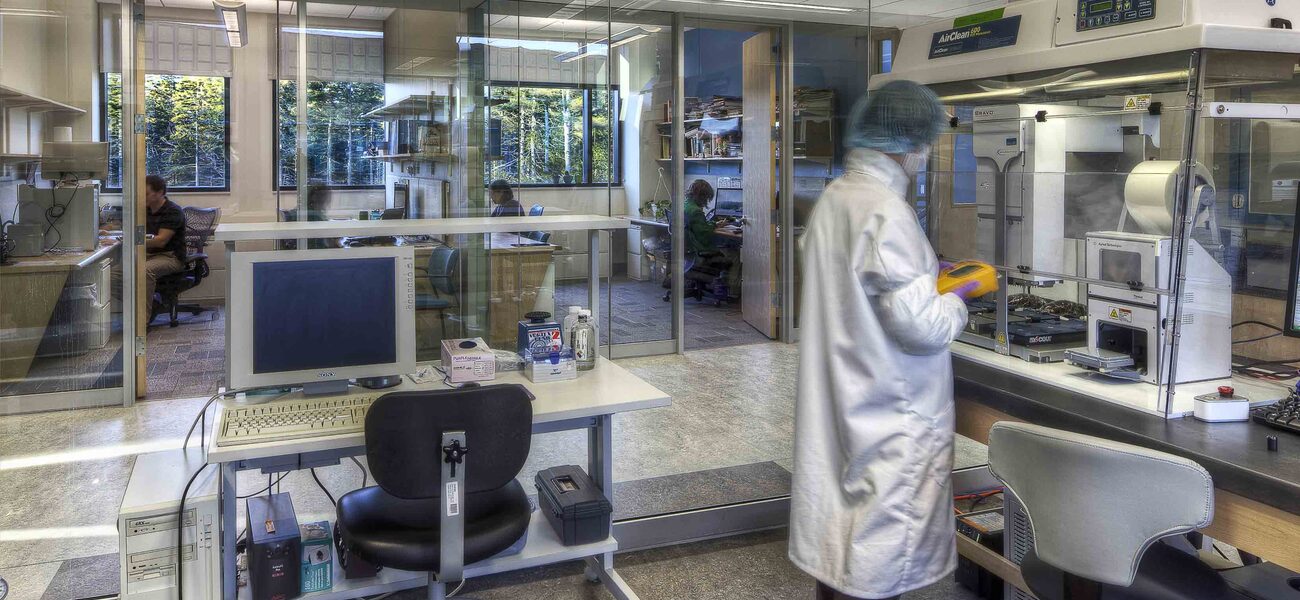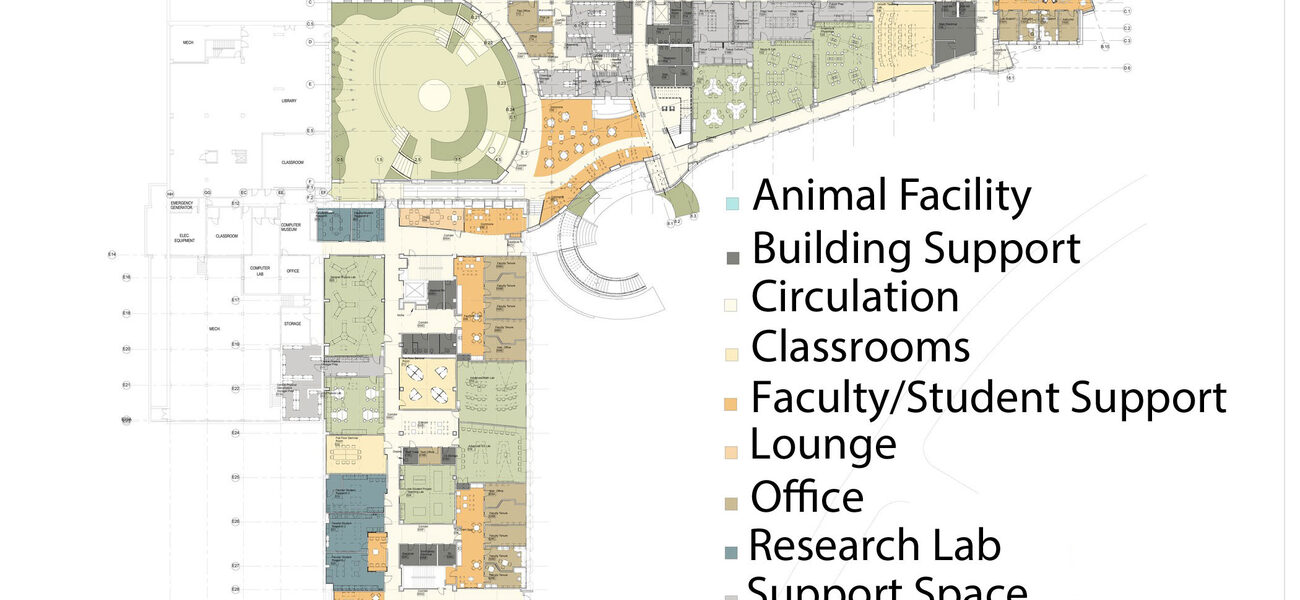Bigelow Laboratory for Ocean Sciences in Maine completed a three-phase construction project that for the first time consolidates its entire marine research operation into one facility, replacing a collection of buildings, some of which had neither heat nor air conditioning. The new Ocean Science and Education Campus, on 54 acres where the Damariscotta River empties into the Gulf of Maine, includes a shore facility for research vessels.
Bigelow’s mission is to understand the key processes that drive the evolution of the world’s ocean ecosystems, with a specific focus on how ocean organisms impact and are impacted by climate change. Each of the three research wings houses scientists and laboratories that are specific to one or more areas of exploration. The three wings are connected by a “collaboration commons.”
The 21,000-sf Center for Blue Biotechnology in Wing 1 contains:
- National Center for Marine Algae and Microbiota
- Jane J. MacIsaac Facility for Aquatic Cytometry
- Single Cell Genomics Center
- Deep Biosphere Laboratory
- Geomicrobiology Laboratory
- Industrial Collaboration Laboratory
Wing 2, with 19,000 sf of space, houses the Center for Ocean Biogeochemistry and Climate Change:
- Ocean Observing and Optics Laboratory
- Marine Virology and Parasitology Laboratory
- Phytoplankton Ecology and Biogeochemistry Laboratory
- Trace Metal Biogeochemistry Laboratory (which is made of plastic to prevent contamination from other metals)
- Air-Sea Interactions Laboratory
- Rad Lab
The 21,000-sf Center for Ocean Health in Wing 3 contains:
- Harmful Algae Bloom Laboratory
- Zooplankton Physiology and Sensory Ecology Laboratory
- Microbial Ecology Laboratory
- Ecosystem Modeling Laboratory
- Seawater System and Experimental Aquaria
Both the laboratories and utility infrastructure are designed to be flexible. The arrangement of the offices, the meeting spaces, and the special “collaboration porches” overlooking the ocean, are designed to promote interaction and enhance interdisciplinary collaborations. Researchers can move their offices among the buildings to engage in interdisciplinary work. In future phases, the commons will be extended to connect to additional research wings and to a main entry and Education and Administration Center. The total staff of 68, including scientists and administrative workers, is expected to grow to about 100 by 2016.
In keeping with its ecological mission, the facility contains many sustainable features:
- A modular central plant utility efficiently supplies hot water, chilled water, and back-up power to each wing through a service tunnel, allowing for campus growth while minimizing further site disturbance.
- Lab air is supplied by individual air handling units with enthalpy wheels, minimizing the loss of energy from exhausted air.
- A PV array with 66 rooftop panels produces 20 kW of electricity to power the flowing seawater system.
- Additional energy recovery occurs at each wing’s exhaust fans, minimizing loss from research hoods.
- The building envelope, which utilizes a zinc rain screen, is highly insulated with a combination of mineral fiber and spray foam insulation within the wall cavity. The window system is a thermally broken aluminum curtainwall with argon-filled, high-performance, Low-E IGUs. Glazing percentages over each elevation balance daylighting needs, the potential for heat and cooling loss, and passive gains. A 30-inch-deep louvered solar shade protects the southern windows from heat gain during the summer.
The project, with energy use at 53 percent of baseline model, is certified LEED Platinum.
| Organization | Project Role |
|---|---|
|
Perkins&Will
|
Design Architects, all buildings; Architect of Record, Buildings B and C
|
|
WBRC
|
Architect of Record on Building A
|
|
Consigli Construction Co., Inc.
|
Builder
|
|
Perkins&Will
|
Laboratory Planners
|
|
Perkins&Will
|
Interior Design
|
|
WBRC
|
MEP and Structural Engineers
|
|
Sebago Technics
|
Civil Engineers
|
|
Sebago Technics
|
Environmental Consultants
|
|
Terrence J. DeWan & Associates
|
Landscape Architects and Planners
|
|
Thornton Tomasetti
|
Sustainability and LEED Consultants
|
|
Hamilton Scientific
|
Laboratory Casework and Fume Hoods
|
|
Tenji, Inc.
|
Seawater Systems
|




